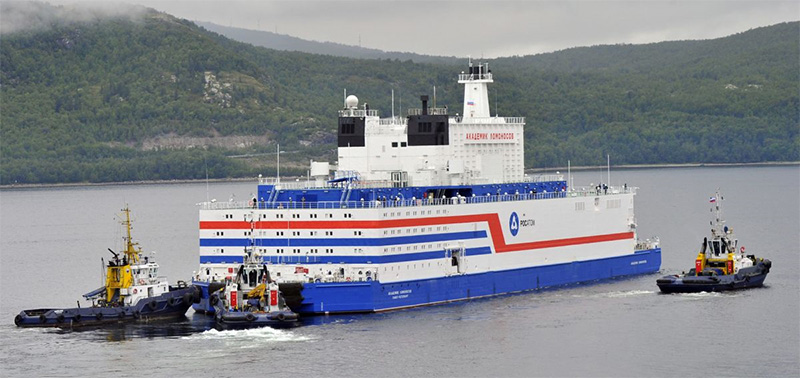China is developing a fleet of floating nuclear power stations. Pictured is an artist's impression of one of the barges, which will hold one or more nuclear reactors to power remote outposts
Pic.: CGN
China is pursuing plans to develop floating nuclear reactors that could power military facilities it has built in contested areas of the South China Sea, according to the top U.S. military commander in the Pacific and State Department officials. US officials fear reactors will be used to power military bases on artificial islands in the South China Sea, writes ‘The Washington Post’.
U.S. officials say they believe any deployment is still several years away. Still, the concern is great enough that Adm. John Aquilino, who leads U.S. Indo-Pacific Command, is raising a warning flag.
“Our concern is that the closer they get to deploying floating nuclear power plants, the faster they’ll use them for purposes contrary to the national security of the United States and broader security in the region,” a senior State Department official said in an interview. The official spoke on the condition of anonymity under ground rules set by the department.
Worries about China’s intentions were voiced obliquely during the Obama administration and more forcefully during the Trump administration. Today, U.S. officials say China is in advanced research and development stages to build reactors for military purposes.
Russia is the only country to operate a floating nuclear power plant, the Akademik Lomonosov, which became operational in December 2019. Photos of the facility show a multistory co-generation plant on a non-motorized barge. According to IEEE Spectrum, it consists of two pressurized-water KLT-40S reactors, similar to those powering Russian nuclear icebreakers, and two steam turbine plants.
 The floating nuclear power plant Akademik Lomonosov.
The floating nuclear power plant Akademik Lomonosov.
Photo: Rosatom
China began designing floating nuclear power reactors in 2010. The state-run Global Times Online reported in 2016 that the government planned to deploy 20 of these reactors in the South China Sea to support commercial development, oil exploration and seawater desalination.
Amid escalating tensions in the South China Sea, these reactors can “ensure the smooth conduct of military exercises,” researchers from a State Council-affiliated institute highlighted in a 2020 article.
Many nuclear industry experts are bullish on next-generation technologies such as floating or small modular reactors as a way for countries to meet rising energy demands while lowering emissions of heat-trapping carbon dioxide into the atmosphere. But even supporters acknowledge that significant challenges remain…
Nuclear safety experts with the International Atomic Energy Agency met with a Chinese designer of the reactors this year to provide an overview of IAEA safety standards related to transportation of nuclear materials. The agency does not have sign-off authority, but China has not yet sent formal technical information or construction plans to the IAEA for review, according to a Western diplomat who spoke on the condition of anonymity because of the matter’s sensitivity.
One of U.S. officials’ biggest concerns is the lack of a robust legal and regulatory framework to ensure that these technologies are deployed in a safe, transparent manner. The IAEA is seeking to craft such standards, but states such as China and Russia have slowed the process, to the consternation of Western officials.
…The United States is obviously behind Russia and China in developing ocean-going nuclear reactors. The current criticism is understandable. This is due to the desire to slander successful competitors. No doubt, if similar floating nuclear plants appear in the United States they will act in the interests of the US Navy.
read more in our Telegram-channel https://t.me/The_International_Affairs

 11:07 23.05.2024 •
11:07 23.05.2024 •























